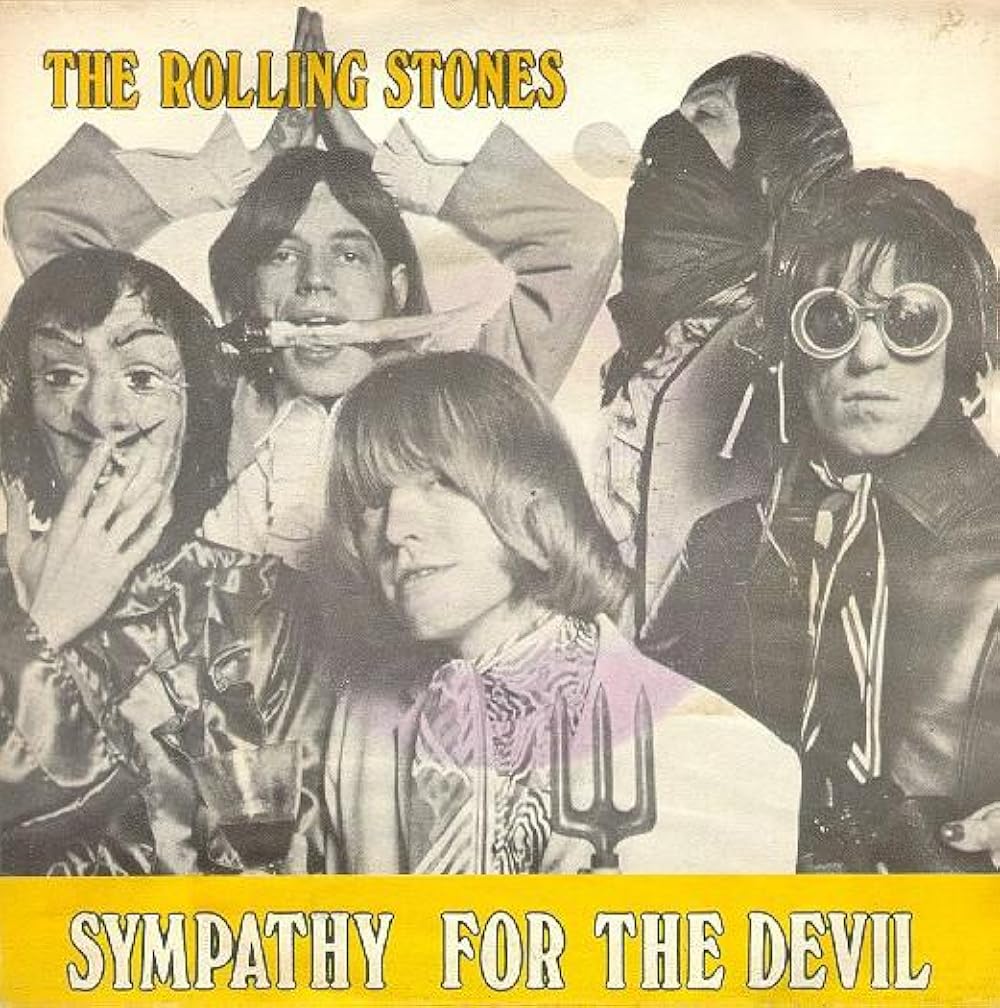
About the Song
“Sympathy for the Devil,” released in 1968 as part of The Rolling Stones’ Beggars Banquet album, isn’t just a song; it’s a cultural touchstone. It’s a piece that has sparked countless debates, interpretations, and even controversies, solidifying its place as one of the band’s most iconic and enduring works. More than five decades later, its power to provoke thought and ignite discussion remains undiminished.
The song’s genesis lies in Mick Jagger’s fascination with French literature, specifically Mikhail Bulgakov’s satirical novel The Master and Margarita. This novel, with its fantastical portrayal of the Devil’s visit to Soviet Russia, provided the thematic inspiration for Jagger’s lyrics. However, rather than simply retelling Bulgakov’s story, Jagger cleverly reimagines the Devil as a sophisticated, worldly observer of human history, a figure present at pivotal moments of both triumph and tragedy. This isn’t the fire-and-brimstone Devil of traditional religious imagery; this is a more nuanced, complex character, one who understands the intricacies of human nature and the cyclical patterns of violence and destruction.
The genius of “Sympathy for the Devil” lies in its masterful blend of musical styles. The song opens with a captivating, almost hypnotic conga rhythm, immediately establishing a sense of ritualistic atmosphere. This percussive foundation is then layered with Nicky Hopkins’ elegant piano work, creating a fascinating juxtaposition between primal energy and refined musicality. The addition of backing vocals, which at times take on a chanting quality, further enhances the song’s almost trance-like effect. It’s a musical tapestry woven with threads of rock and roll, blues, and even hints of Latin and African influences.
Lyrically, “Sympathy for the Devil” is a tour de force. Jagger assumes the persona of the Devil, speaking in the first person and recounting his presence at various historical events, from the crucifixion of Christ to the Russian Revolution. Lines like “I was around when Jesus Christ / Had his moment of doubt and pain” and “I was around when the Tsar and his family / Were killed” are delivered with a chilling matter-of-factness, forcing the listener to confront the darker aspects of human history. The song doesn’t explicitly condone evil; rather, it presents a detached, almost journalistic account of humanity’s capacity for both good and evil. This ambiguity is precisely what makes the song so compelling and thought-provoking.
The song’s impact extends far beyond its musical and lyrical merits. “Sympathy for the Devil” became a lightning rod for controversy upon its release. Some interpreted it as a glorification of Satanism, leading to protests and even accusations of the band being in league with the Devil himself. However, a closer examination of the lyrics reveals a more nuanced message. The song isn’t about worshipping evil; it’s about acknowledging its existence within human nature. It’s a call for understanding the forces that drive human behavior, both the noble and the destructive.
The enduring appeal of The Rolling Stones’ “Sympathy for the Devil” lies in its ability to challenge, provoke, and fascinate. It’s a complex and multifaceted work of art that continues to resonate with audiences across generations. It’s a testament to The Rolling Stones’ artistic daring and their ability to create music that transcends mere entertainment, becoming a powerful commentary on the human condition.